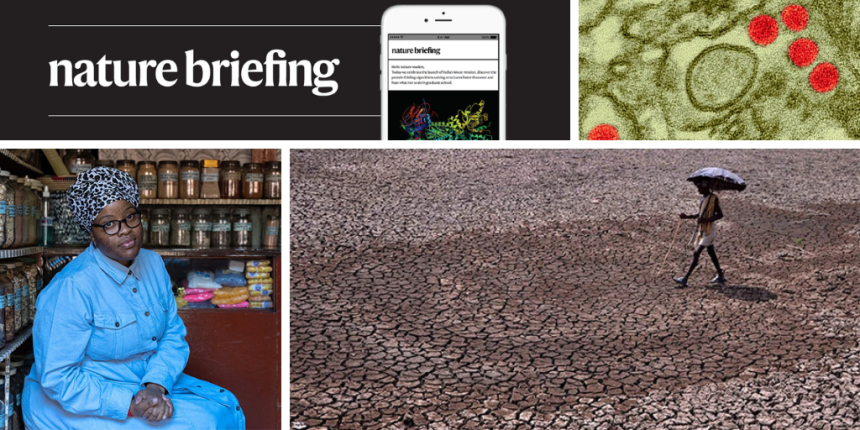Hello Nature readers, would you like to get this Briefing in your inbox free every day? Sign up here.
An imbalance of fungi in the gut could contribute to excessive inflammation in people with severe COVID-19 or long COVID. Individuals with severe disease had elevated levels of a fungus that can activate the immune system and induce long-lasting changes. This raises the possibility that antifungal treatment could be repurposed to help people who are critically ill. It’s still unclear whether this imbalance is a result of contracting COVID-19 or preceded it and made people more susceptible.
Mummified leaf-eared mice (Phyllotis vaccarum) found on the tops of Andean volcanoes show that mammals can survive in extraordinarily hostile locations. Genetic analysis suggests that the animals spent extended periods at 6,000 metres above sea level — more than 1,000 metres above the highest-altitude plant life in the region. “This is truly surprising and challenges our previous assumptions about the adaptability of species to extreme environments,” says behavioural ecologist Emmanuel Fabián Ruperto.
A lunar rock collected by Apollo 17 astronauts suggests that the Moon formed 40 million years earlier than thought. The Moon was born when a Mars-sized object slammed into Earth around 4.5 billion years ago, although the exact timeline of when the molten Moon solidified remains unclear. “It’s been controversial for the last 50 years, since the 1970s when the astronauts brought back the samples,” says cosmochemist and study co-author Bidong Zhang. A re-analysis of one of these rock samples discovered what might be the oldest lunar material: 4.46-billion-year-old zircon crystals.
Plants have evolved myriad chemical defences to survive attacks from herbivores. In Most Delicious Poison, biologist Noah Whiteman delves into how humans have harnessed these toxins: from ethanol, which imitates a calming neurotransmitter, to mustard oil, whose precursors combine with a plant enzyme to release its spicy bloom. “In places it is easy to get lost in the chemistry, but the author deftly navigates readers through nature’s chemical mazes,” says writer and reviewer Emily Monosson.
Nature | 6 min read
Excitement seems to be growing about generalist medical artificial intelligence (AI). Unlike the tools available now, which serve specific functions such as detecting lung nodules in a chest scan, generalist models would act more like a physician. They could assess every anomaly in a scan and even create something like a diagnosis. Inspired by the models underlying chatbots such as ChatGPT, they would be trained on massive data sets in the hope that it will give them broad capabilities. “The real goal to me is for AI to help us do the things that humans aren’t very good at,” says radiologist Bibb Allen.
Nature | 11 min read
More than 1,600 animals and plants have been listed under the US Endangered Species Act since its inception 50 years ago. Less than 6% of the species have ever been delisted. Some question the law’s long-term ability to deal with the biodiversity crisis, because it was never designed to stop habitat loss or manage the consequences of climate change. (Scientific American | 20 min read) (June Minju Kim (graphic); Brown Bird Design (illustrations); Sources: U.S. Fish & Wildlife Service Environmental Conservation Online System; U.S. Federal Endangered and Threatened Species by Calendar Year; Listed Species Summary)



